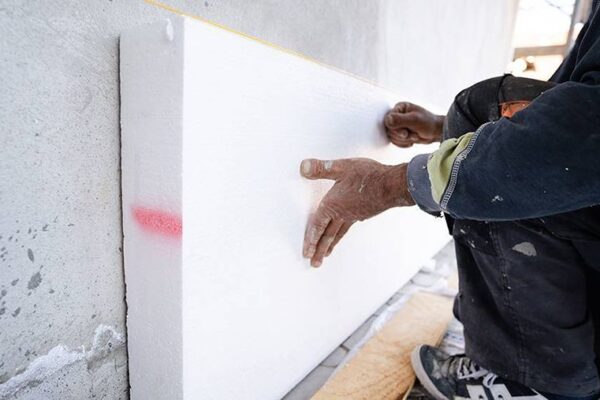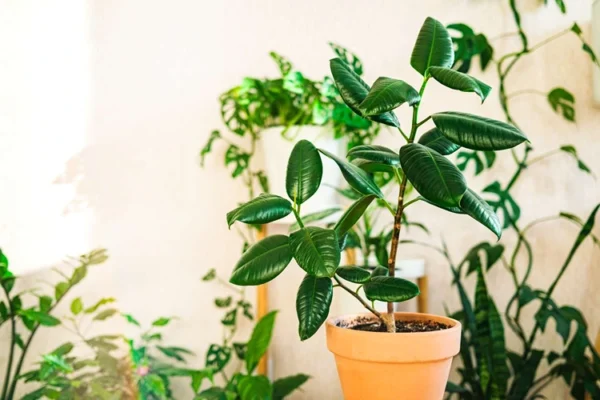How to Plant and Grow Geraniums: Fine Tips
Contrary to popular belief, the plants commonly referred to as geraniums are not actually true geraniums. When you see a plant labeled as a geranium at a garden shop, it is most likely a member of the Pelargonium genus, which has been widely referred to as “geraniums” colloquially. True geraniums, scientifically known as the genus Geranium, are a separate group of robust perennial shrubs that produce beautiful flowers.
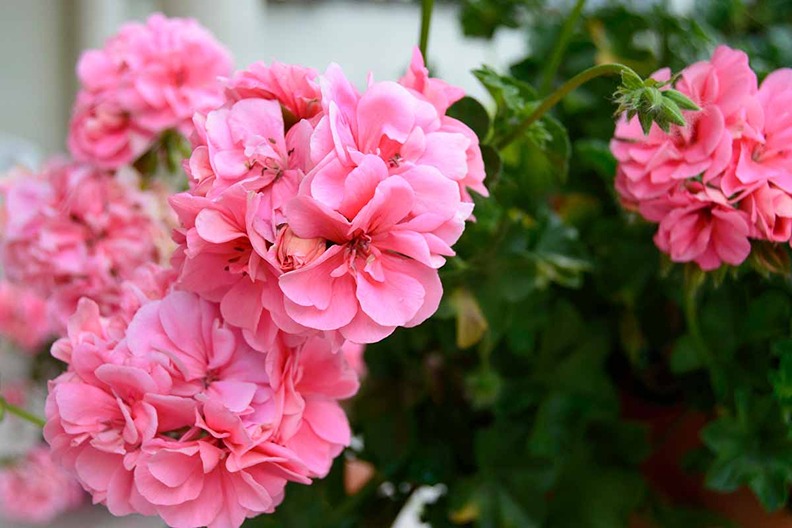
Scented geraniums, known for their attractive blossoms, delightful fragrances, and culinary applications, make a splendid addition to various gardening settings such as herb gardens, borders, window boxes, and hanging baskets. Some scented can even be utilized as ground cover, like the Peppermint geranium, which spreads and provides coverage, as long as it is not exposed to severe frost.
They are highly favored plants in the southern regions. Their aromatic foliage and vibrant blooms make them a popular choice for backyard garden beds as well as pots, planters, and containers. Whether you are an experienced gardener or new to growing geraniums, there are undoubtedly some surprising facts about these flowering plants that will pique your interest and encourage you to rediscover the joy of cultivating these cheerful blossoms. Keep reading to expand your knowledge about these beloved regional flowers and consider trying your hand at planting some of them this season.
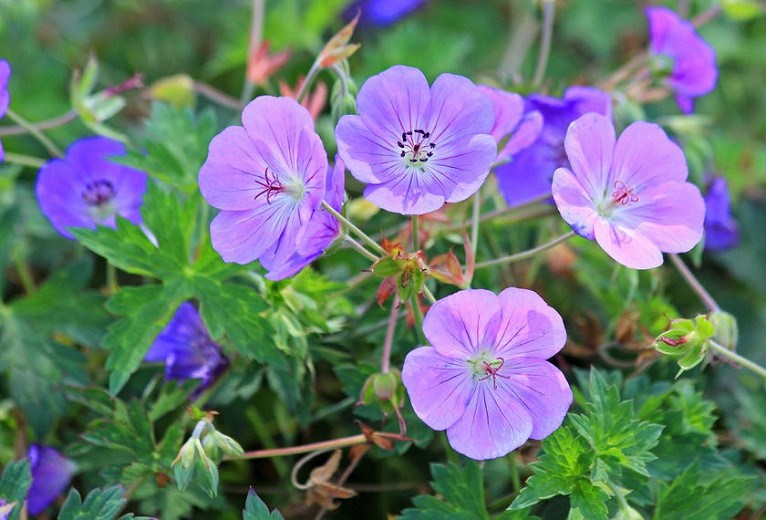
How to Care
Geraniums are generally low-maintenance plants, requiring minimal care and attention.
Light Requirements
These plants thrive in abundant sunlight and prefer full sun exposure. When growing it in containers, you have the flexibility to adjust their location to suit the natural lighting conditions. In case you notice signs of sunburn on the plant, providing partial shade temporarily can aid in its recovery. If the leaves of your geraniums turn yellow and blooming is delayed, it is recommended to move the container to a sunnier spot to enhance its access to natural light.
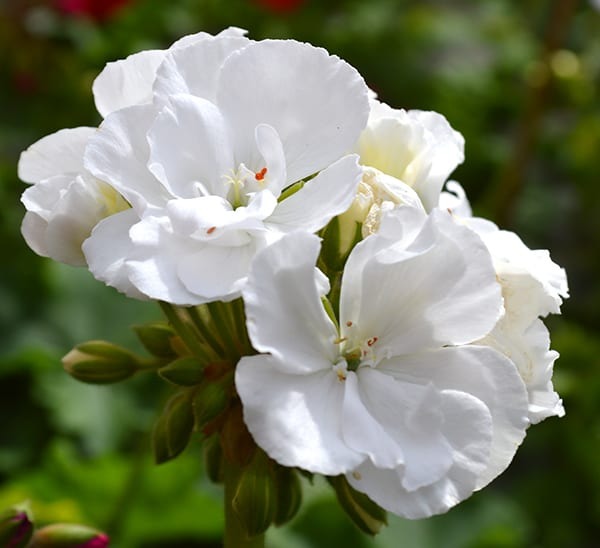
Soil Requirements
Geraniums can be planted in any well-draining soil that is of good quality. If the soil is poor, it is advisable to enrich it with ample organic matter. They can be grown in fertile garden soil generally have low fertilizer requirements. However, if they are planted in light, sandy soil, it is recommended to provide two or three applications of fertilizer during their active growth phase.
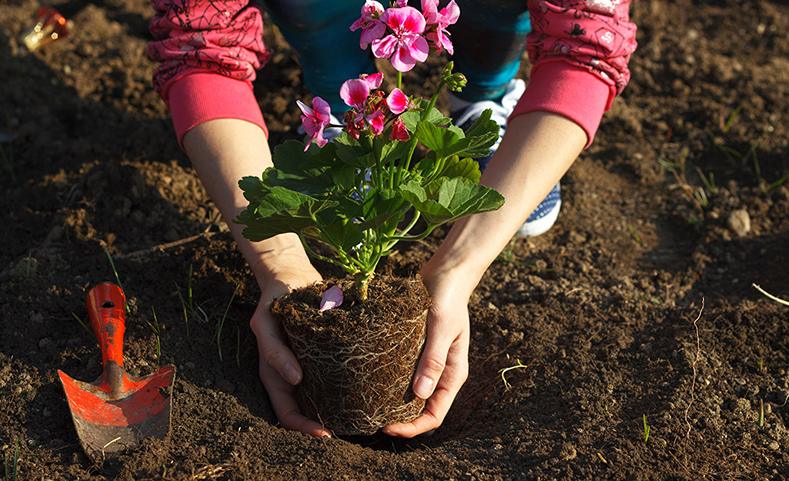
Watering
Geraniums necessitate moderate to regular watering. When growing them in pots or containers, it’s important to note that they tend to dry out more quickly compared to those planted in garden beds. Therefore, you will need to water potted more frequently to maintain their proper moisture levels.
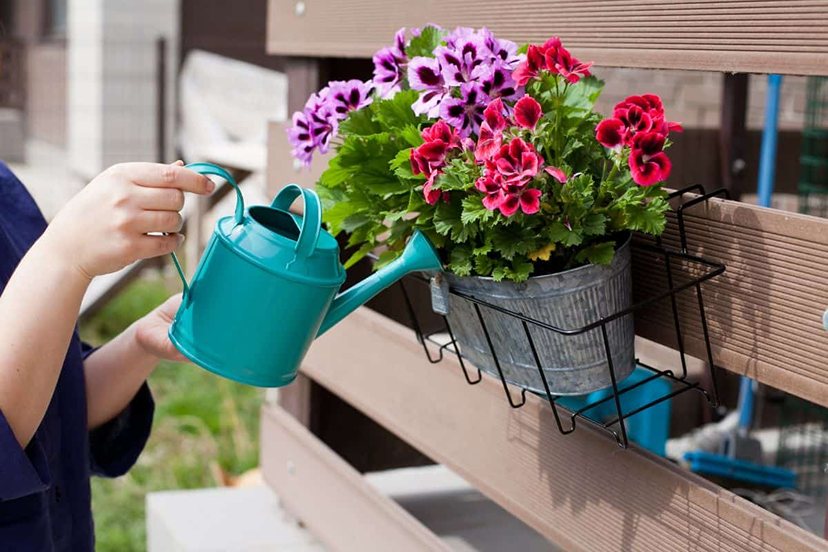
Temperature and Humidity
Geraniums can be adversely affected by high temperatures during the summer months. It’s not uncommon for many common varieties of geraniums to cease blooming in extremely hot weather, a phenomenon referred to as “heat check.” However, they will resume blooming once the weather cools down. To prevent this issue, the Grumpy Gardener suggests opting for heat-tolerant geranium varieties. Some recommended heat-tolerant geranium series include ‘Americana,’ ‘Orbit,’ ‘Cascade,’ and ‘Summer Showers.’
Fertilizer
It’s important not to over-fertilize geraniums. For optimal nutrition, feed your geraniums with a slow-release, granular fertilizer once in the spring. Alternatively, you can use a liquid 20-20-20 fertilizer three times throughout the growing season to provide essential nutrients. By following these fertilization guidelines, you can ensure that your geraniums receive adequate nourishment without the risk of excessive fertilizer application.
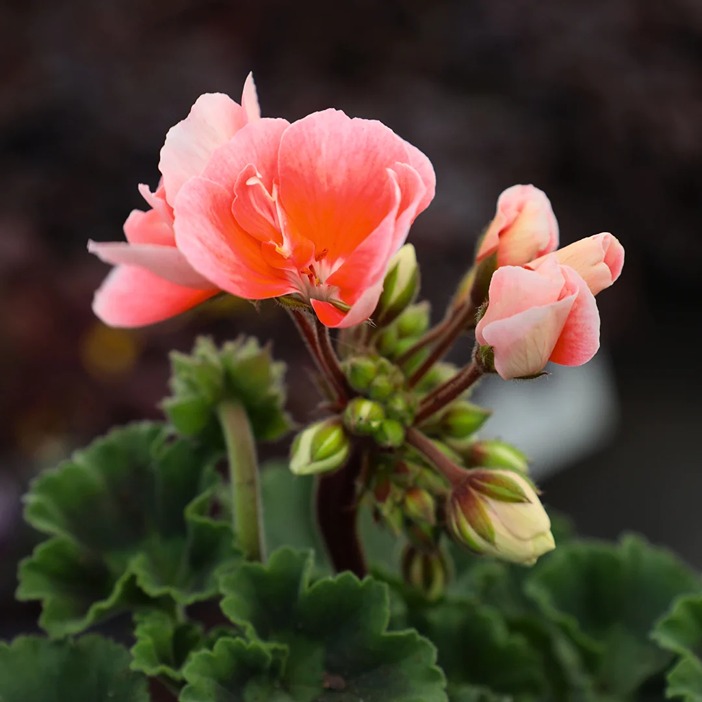
Ideal Planting Locations
Geraniums are versatile plants that can thrive in various settings. They make beautiful additions to garden beds and borders, where they truly shine. Traditional bedding geraniums, in particular, excel in hot weather conditions and are known for their ability to withstand dry environments. Additionally, geraniums can serve as captivating focal flowers when grouped together in containers, and they can add a vibrant touch to window boxes.
One of the appealing aspects of geraniums is their wide range of colors, shapes, and sizes of blooms. This versatility makes them suitable for numerous applications, giving you plenty of reasons to incorporate geraniums throughout your garden and landscaping projects.
While most geraniums are grown as annuals, it’s important to note that they behave as perennials in Zones 10-11. If you reside in these zones, you have the option to bring the geraniums indoors during winter for overwintering and then replant them outdoors when spring arrives. Alternatively, with sufficient light, geraniums can bloom indoors year-round, offering a continuous display of beauty and color.
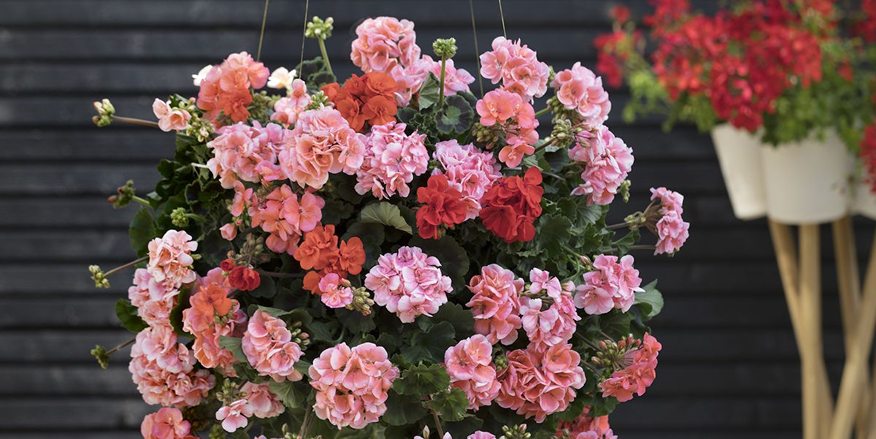
Pruning and Deadheading
Geraniums generally do not require extensive pruning. Instead, the focus is on deadheading the flowers. During the blooming season, it is important to remove wilted and faded flowers from the plant. This process, known as deadheading, helps stimulate the production of new blooms. Additionally, if you wish to shape the growth of your geranium, you can gently pinch the growing tips of young plants. This practice encourages the development of lateral branches, resulting in a fuller and better-rounded appearance for the plant.
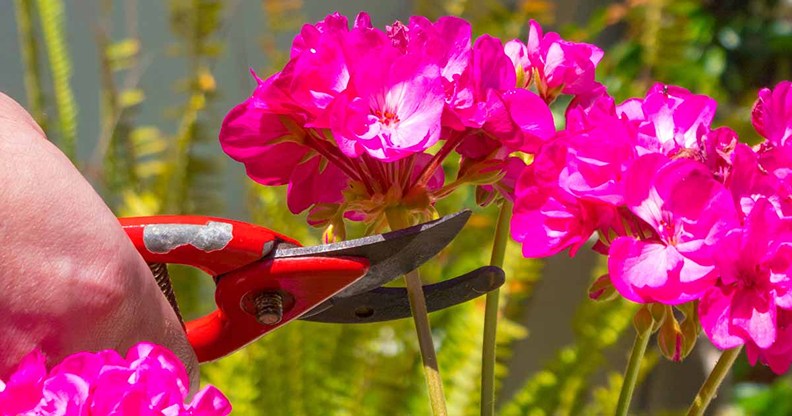
How to Propagate
Geraniums from Seeds Late winter is considered the optimal time to initiate the process of growing geraniums from seeds. To begin, prepare clean planting flats and fill them with moistened planting mix. Press the mix gently into each opening of the flat. Create shallow indentations using your finger and follow the instructions provided on the geranium seed package for sowing the seeds. Press the seeds into the soil and lightly cover them with the planting medium. Give the soil a light watering and place the planting flat under a grow light to provide sufficient illumination for germination.
Once the seedlings have developed two or more leaves, it is time to transplant them into small nursery pots. Prior to planting them outdoors, gradually acclimate the seedlings by placing the pots in an area with dappled shade. This exposure helps the plants adapt to outdoor conditions and strengthens their endurance. After approximately one week, the geraniums can be planted in pots, window boxes, or directly into planting beds, allowing you to enjoy their vibrant beauty.
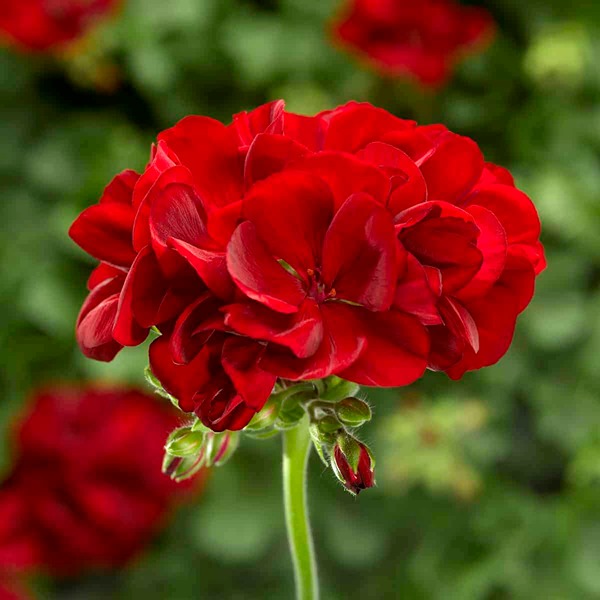
Overwintering
Geraniums To protect your geraniums from the first frost, it is advisable to bring your container indoors. Find a sunny window where the plant can receive at least six hours of sunlight daily, ensuring that the temperature remains above 50°F (10°C). An alternative option is to allow the geraniums to go dormant in a cool and dark area such as the garage, as long as the temperature doesn’t drop to freezing levels. During this dormancy period, it is important to let the soil dry out to a barely moist state. Remove any dead leaves, flowers, and signs of rot to promote a healthier plant.
Once the last frost of spring has passed, gradually reintroduce the potted geranium outdoors. Begin by placing it outside for a short duration each day, gradually increasing the time and exposing it to more sunlight. This process helps the plant acclimate to warmer temperatures and readjust to regular watering. Once the nightly temperature consistently stays above 50°F (10°C), you can resume regular feedings to support healthy growth.
Common Pests
If you notice that your geranium has buds that fail to open or if you observe tattered petals, it may indicate a pest infestation. Common culprits include aphids, spider mites, whiteflies, and, in certain regions, tobacco budworms. To combat these pests, spraying the affected plant with neem oil or spinosad can be effective treatments. These solutions help control and mitigate the presence of pests, allowing your geranium to thrive without interference.
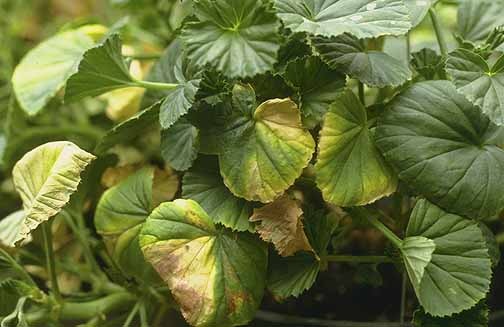
Promoting Geranium Blooms
When it comes to encouraging geraniums to bloom, following proper care practices is key. As mentioned in The New Southern Living Garden Book, start by planting geraniums in any well-draining soil. If the soil is of poor quality, it is recommended to enrich it with an ample amount of organic matter. Geraniums grown in good garden soil typically require minimal fertilizer, while those planted in light, sandy soil may benefit from two or three feedings during their active growth phase.
To ensure a prolific blooming season, it is important to regularly remove wilted and faded flowers from the plant. This process, known as deadheading, stimulates the production of new blooms. Additionally, you can shape the growth of your geranium by gently pinching the growing tips of young plants. This technique encourages the development of branches along the sides of the plant, resulting in a more well-rounded and bushy appearance.
By providing the right growing conditions, removing spent flowers, and practicing selective pruning, you can maximize the blooming potential of your geraniums and enjoy a vibrant display of blossoms.

